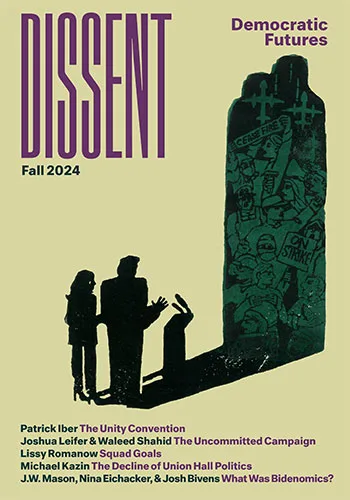The “End of Men” in Sandy Hook
The “End of Men” in Sandy Hook
Another mass shooting has rocked the country, the second most deadly in our history after Virginia Tech. As we try to make sense of it, we look for patterns in an attempt to preempt future slaughters. Were the guns purchased legally? Was mental illness a factor? And, of course, who was this killer, what drove him to violence, and what does he have in common with the killers who came before him?
Because it’s almost always a “him.” According to Mother Jones, of the sixty-two mass murders over the past thirty years, only one killer was a woman. Of the last twenty-seven shootings, twenty-one were by white men under forty-five, as Kate Harding pointed out. So what drives white men to pick up guns and kill as many innocent, random people as possible?
If you listen to Christy Wampole in the New York Times yesterday, it’s because “maleness and whiteness are commodities in decline.” Relying on what she admits is “merely anecdotal evidence, not social science,” she describes how men have little chance of succeeding anymore, with women plowing ahead. This is straight from the popular End of Men line of thinking: our economy, and our society, supposedly now favor women over men, leaving men to nurse their shattered manhood and drift about without employment or power.
This is straight from the popular End of Men line of thinking: our society supposedly favors women over men, leaving men to drift about without employment or power.
But the End of Men just doesn’t square with reality. It was a meme born of the recession, when men at first suffered most of the job losses. But these days men and women have pretty equal unemployment rates. The rate that differs? Poverty. More than 17 million women lived in poverty in 2010, compared to 12.6 million men. And don’t even get me started on the gender wage gap, which begins as soon as women enter the workforce and follows them no matter what they do or where they go. Yet we see little mass hysteria over the End of Women.
The discrepancies are even larger at the top. A report came out just last week that women hold just 14 percent of positions in the C-suite of Fortune 500 companies and only 16.6 percent of the board seats. Worse, progress there has stalled. This was the seventh consecutive year in which the numbers have flatlined at boards and the third year of stagnation at the executive level. Meanwhile, we may have a record number of women in the Senate this year, but that still leaves us holding just one in five seats. There has never been a female Commander-in-Chief.
This means that the remaining seats in corporate offices or on Capitol Hill are men’s for the taking. Wampole may know many men flailing about in their lives (“while every woman in my family has done O.K. in the end, every man on one side of my family except for my grandfather has spent time in jail”), but on the whole men are simply doing better than women.
Nor should white men fear a greater entrance of women and minorities into the workforce. Wampole imagines that the economy is a finite pie, with men’s slices diminishing if others start grabbing more. Instead, it can be an expanding pool. Combating discrimination against women and minorities has contributed to that expansion. Researchers have calculated that increased inclusion accounts for 20 percent of the country’s economic productivity over the past half century. When employers have larger pools of talent to pick from, they’re more likely to find the best person for the job.
But this doesn’t mean, of course, that white men don’t feel threatened. They may not have to fear total economic annihilation, but they do have to face the fact that where they once ruled over all structures of power, that rule is no longer absolute. It can be a brutal wakeup for some men to realize they are no longer at the top of the ladder with all women and minorities far below. And let’s not forget that most white men have also been excluded from power in the past. The destitute, the marginalized, the exploited all hung out at the bottom too. It’s a narrow slice of the population that got used to sitting at the top.
We must talk about the toxic masculinity that can feel threatened by the loosening of patriarchy. A paper that looked at school shootings from 1982 to 2001 argued that there is “one factor that cuts across all cases of random school shootings—masculinity.” Specifically, many of the perpetrators were gay-baited and teased for not measuring up to what we have decided is manly. But it doesn’t always have to be so explicit. The patriarchy that tells us that women aren’t going to be as successful at running a company or a country as men also whispers to men that they have to show absolute strength—physically and emotionally—to be a man. This piece of the puzzle has to be addressed when we talk about who commits mass shootings.
But Wampole does the opposite. She longs for the day when young men were seen exclusively as heroes – particularly as soldiers. Men used to be “our heroes, our young and shining fathers, our sweet brothers, our tireless athletes, our fearless warriors,” but now “the hero figure faces increasing precarity.”
If the hero figure demonstrates to men that the only way they can prove their worth is through a gunfight or a fistfight, good riddance. Rather than pining for an imagined time when men were all white knights, perhaps it would be better to expand that definition of heroism. After all, if current reports are true, the women who died in Sandy Hook were incredible heroes, attempting to shield children from bullets with their bodies, running toward gunfire to stop the attacker, keeping their students calm and quiet while the chaos raged on. We could make some room in our definition of hero for the selfless—and for women.
Wampole’s solution is squishy: cultivation of “empathic habit.” Perhaps these murder sprees could be avoided, she reasons, by the “development of a school curriculum that centers around an empathic practice, particularly in courses such as history, social studies, literature, and political science.”
We must talk about masculinity and how our patriarchal culture is harming boys just as much as it harms girls. Yet in the end, to prevent more violence we must enact gun control laws. Our society will always have outcasts, bullies, mentally unstable people who will wish to commit violence. What we can make sure of is that they don’t have access to lethal weapons. Mother Jones concludes that more guns will only mean more violence. Other countries have tried the experiment of cracking down on guns and seen huge successes. Now it’s our turn. Wampole’s solution of choice won’t cut it.




